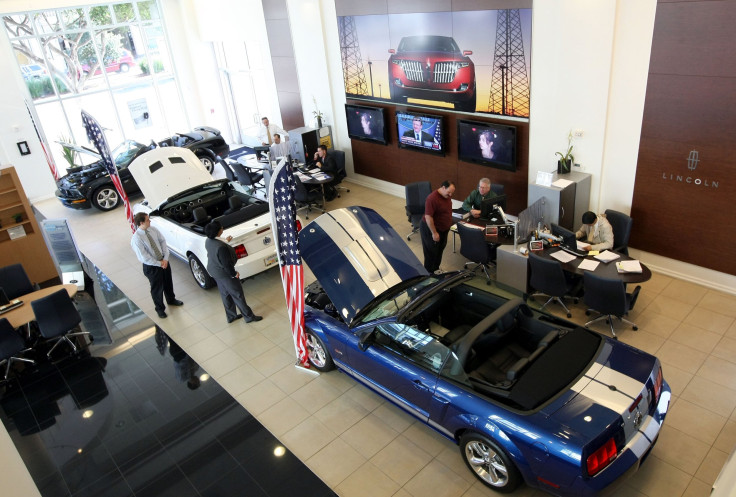February 2016 US New Car Sales: Ford Motors Nearly Ties With General Motors As Consumers Boost Overall Sales 7%

The world’s top automakers reported Tuesday their strongest February U.S. sales month in 15 years. Encouraged by the extra leap-year selling day and heavy advertising during the Super Bowl and Presidents Day weekends, U.S. consumers bought 1.34 million new cars, trucks and utility vehicles, nearly 7 percent more than the previous February.
The seasonally adjusted annualized rate, a key monthly measure of the automotive industry’s health, ended last month at 17.5 million units, the best since 2000 and the 10th consecutive month above 17 million.
“With fuel prices at their lowest point in a decade and interest rates still hovering at near-historic lows, cars and trucks flew out of showrooms last month despite static wages, dreary labor force participation and rampant underemployment,” Jack R. Nerad, executive market analyst for Kelley Blue Book, said in an email. “Cheap gas seems to prompt consumers to buy what they want, typically a larger vehicle than in times of high fuel prices.”
Helped by immense demand for Jeeps, Fiat Chrysler Automobiles gained 12 percent in year-over-year sales growth while Ford led with 20 percent grwoth. Honda and Nissan also posted double digit sales growth compared to the previous February.
Meanwhile, for the first time in years, Ford came close – within 19,000 units -- to tying with the perennial U.S. sales leader, General Motors. However, that came largely due to GM’s voluntary efforts to scale back on fleet sales to corporate or government customers that pushed annual growth down 2 percent for the world’s third-largest car company.
Ford overtook Toyota for second place last month, while Fiat Chrysler blew past Nissan to fourth place.
But a slight drop in the average transaction price compared to January hints at a slowdown while a steep jump in incentives — what automakers sacrifice in profit by offering promotional rebates and other deal-sweeteners — suggest the industry is working harder to lure buyers off the street or away from their rivals.
“We would expect the second half of the year to show more modest growth, as 2016 sales are forecast for a more temperate growth rate of 2.1percent compared with 2015’s 6 percent growth,” Stephanie Brinley, senior analyst at IHS Automotive, said in an email.
February’s U.S. new-auto sales pace was within the range needed to reach 17.6 million units for the year. That would be an all-time high and a record seventh consecutive year of growth. In 2009, the industry hit a 27-year low of 10.4 million units amid a crash in the U.S. auto market that sent General Motors and Chrysler into bankruptcy.
© Copyright IBTimes 2025. All rights reserved.






















